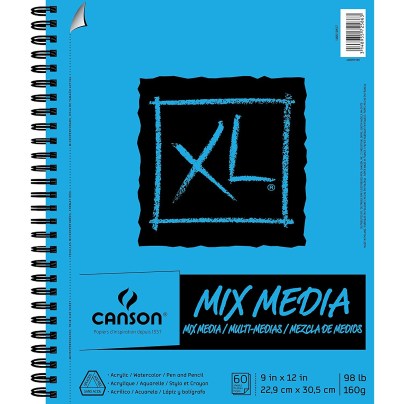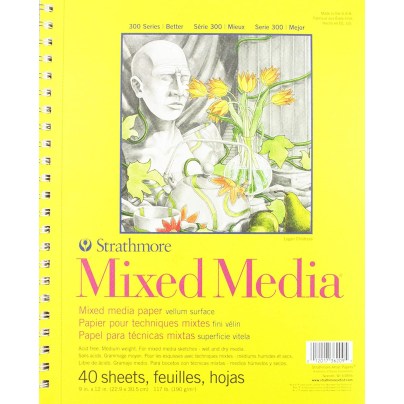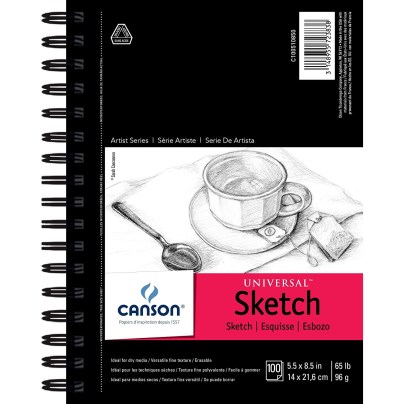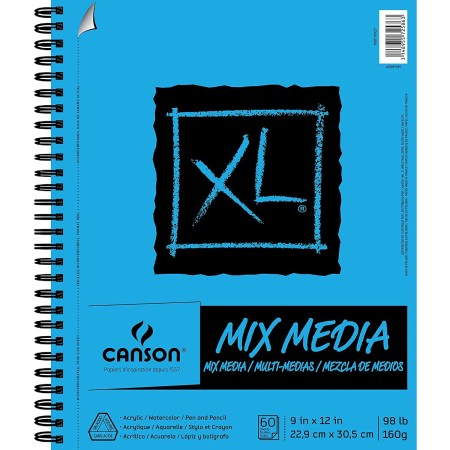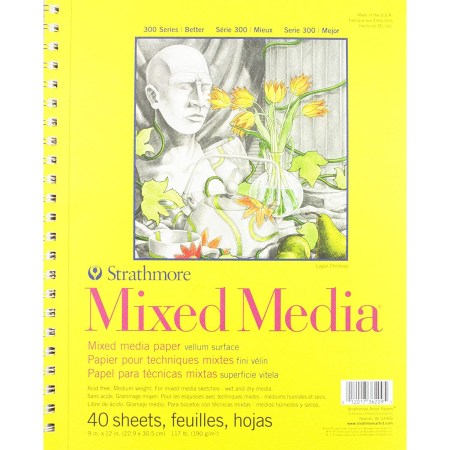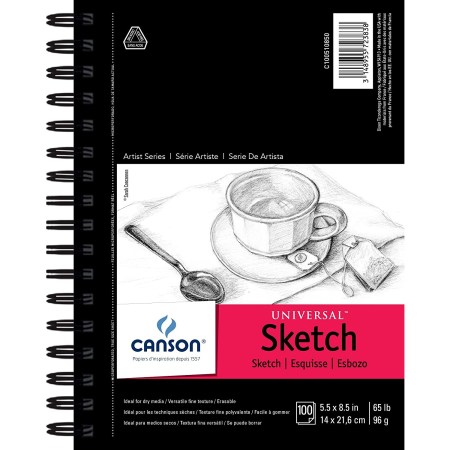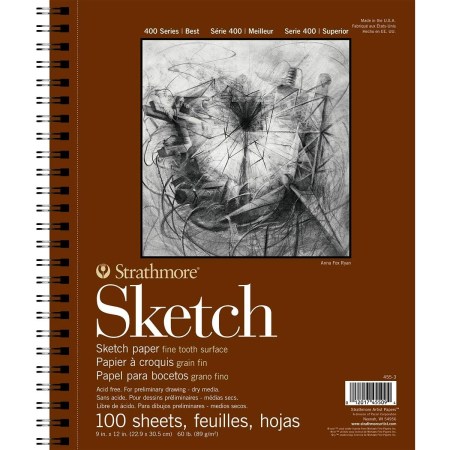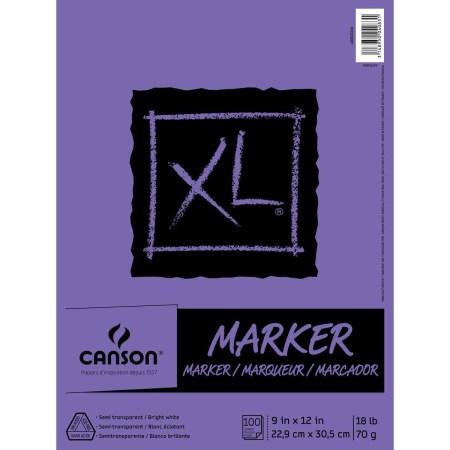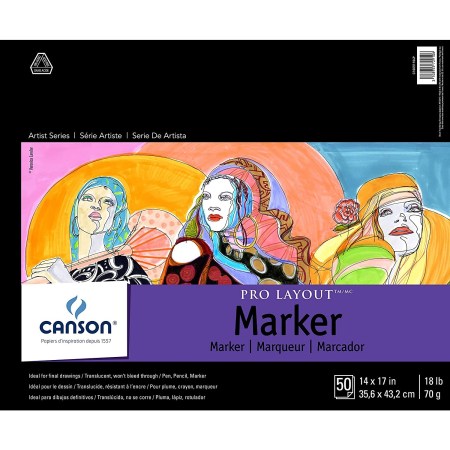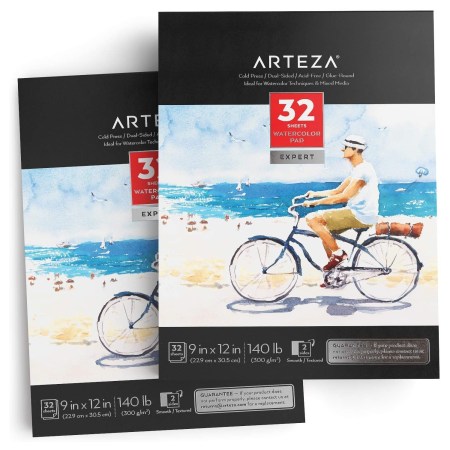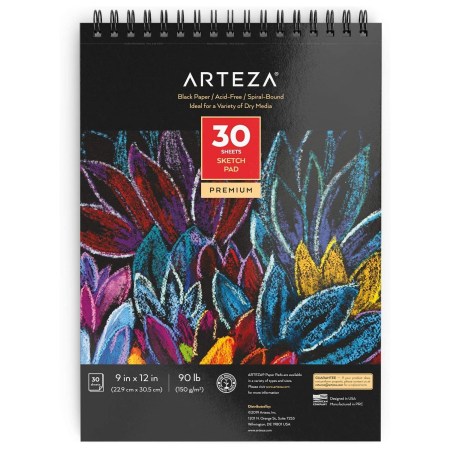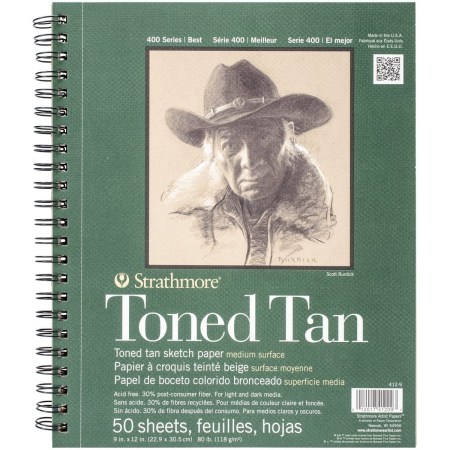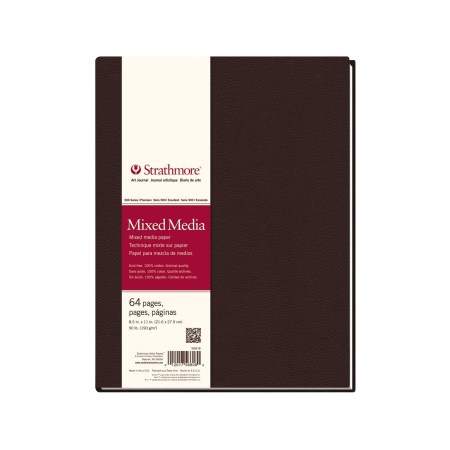We may earn revenue from the products available on this page and participate in affiliate programs. Learn More ›
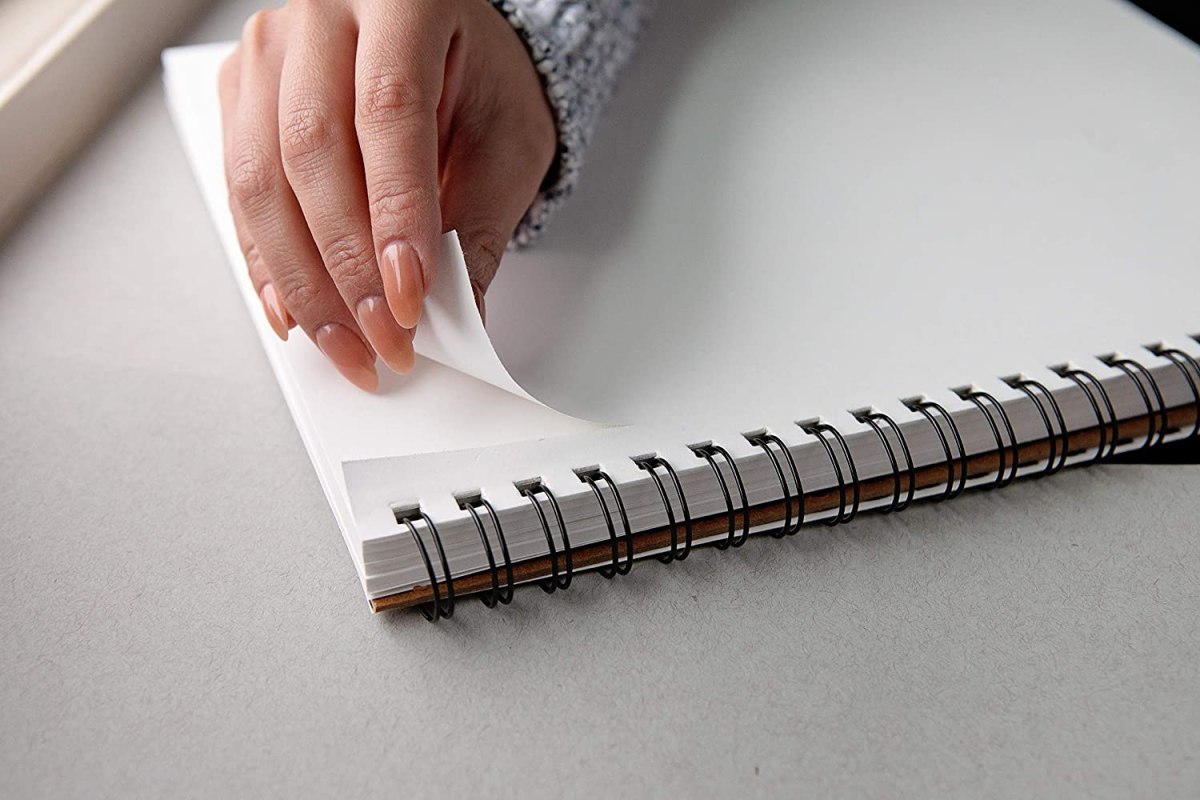
Sure, you can draw on any blank piece of paper that’s handy, but treating yourself to a quality sketchbook will give your artistic vision the platform it deserves. Sketchbooks come in a variety of sizes, bindings, and paper weights, with different types better suited to specific mediums, such as pencil, ink, and watercolor.
First and foremost, a quality sketchbook should have durable paper that prevents fading and bleedthrough. With so many paper tones, weights, and surface textures available, it helps to understand these attributes, so you can choose the right sketchbook for your needs. Read on to find out what to look for in a sketchbook and why the following products are considered among the best in their categories.
- BEST OVERALL: Canson 100510927 XL Series Mix Paper Pad
- RUNNER UP: Strathmore 300 Series Mixed Media Pad
- BEST BANG FOR THE BUCK: Canson Artist Series Universal Sketch Pad
- BEST FOR DRY MEDIA: Strathmore 455-3 400 Series Sketch Pad
- BEST FOR INK: Canson XL Marker Pad
- BEST FOR MARKERS: Canson Artist Series Pro Layout Marker Pad
- BEST FOR WATERCOLORS: ARTEZA 9×12″ Expert Watercolor Pad
- BEST BLACK PAPER: Arteza 9X12” Black Sketch Pad
- BEST TONED PAPER: Strathmore Tan Drawing 400 Series Toned Sketch Pad
- BEST DIARY SKETCHBOOK: Strathmore Hardbound Mixed Media Art Journal
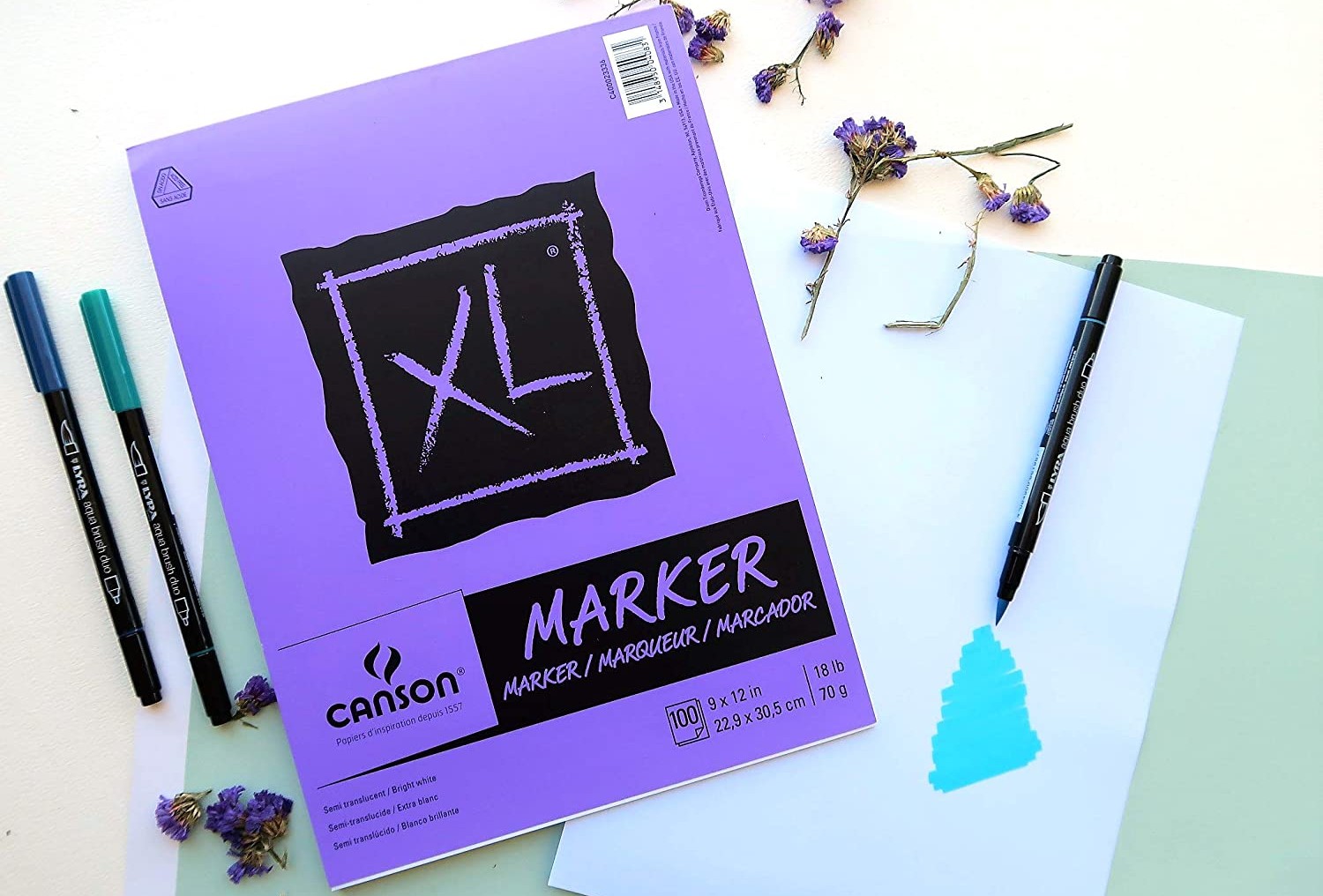
What to Consider When Choosing the Best Sketchbook
Picking the right sketchbook comes down to personal preferences and creative medium. Many artists work in several types of mediums and therefore rely on a collection of sketchbooks. Keep the following factors and features in mind when shopping for sketchbooks.
Size
Sketchbooks range from pocket-sized to large portfolio-style books that can measure 11 by 15 inches or more. Dimensions may be listed by inches, centimeters, or by A paper sizes.
Small sketchbooks are easy to tote in backpacks, purses, or even a pocket. They’re convenient to keep with you on the go, so you can draw where and when the muse strikes. Large sketch pads offer more room to create but are bulkier to transport. Many artists find a 9-inch by 12-inch sketchbook to be a good general-purpose size, meaning large enough for intricate art and still fairly compact to fit in a variety of bags.
Medium
Your preferred medium will determine the type of sketchbook you should use. Mediums can be dry, such as graphite pencil or colored pencil, or wet, such as a marker, drawing pen, ink, or paint.
Dry media works well on most papers, so if you’re primarily sketching with dry media there may be no need to spend extra money on thicker paper meant for wet media. For wet media, heavier, stronger paper is a better choice.
Paper Type and Weight
Paper is categorized by type and weight. Paper weight refers to how thick the paper is measured in pounds (lbs) or grams per square meter (gsm). Generally, the higher the number of lb or gsm, the thicker and sturdier the paper. Lighter paper suits dry media, such as pencil, charcoal, and some pens. Medium weight paper is preferable for use with markers and inks. Heavier weight paper is used for painting.
Paper weight and associated paper type found in most sketchbooks are as follows:
- 25 lb/40 gsm: tracing paper, suitable for graphite or pen.
- 30-35 lb/45-50 gsm: newsprint, suitable for graphite or pen.
- 50-60 lb/75-90 gsm: sketching or practice paper, used for all dry media.
- 70-80 lb/100-130 gsm: drawing paper, suitable for all dry media and some markers.
- 90-110 lb/180-260 gsm: heavy-weight drawing paper, bristol, multimedia papers (similar to cardstock), suitable for use with markers and inks with little bleed through.
- Up to 140 lb/300 gsm or more: Watercolor or acrylic paint paper, suitable for all wet media.
Paper Textures
In addition to paper type and weight, consider the paper’s texture, which is referred to as “tooth.” The more tooth a paper surface has, the rougher the texture. Toothy surfaces hold on to more of the drawing or painting medium. The paper in sketchbooks will range in texture, depending on the brand and the medium for which it’s the most suited.
Smoother papers are better for graphite pencil, colored pencil, and ink pens. Rougher paper works well with paint, charcoal, crayon and pastels, ink washes, or any work that utilizes the texture of the paper for aesthetic effect. Most multimedia sketch paper falls in between smooth and toothier papers to accommodate a variety of wet and dry mediums.
Most sketchbook paper features some sort of sizing, a substance that is applied to or incorporated in the paper to act as a protective filler or glaze. Sizing helps to slow some of the paper’s absorbency as well as reducing or eliminating bleeding and feathering (the pulling of ink or pigment via capillary action). Sizing also minimizes oxidation of the paper’s surface.
Perforated Pages
Some sketchbooks are bound in a way that allows you to easily remove your work for presentation. Most sketchbooks made for wet media have perforated pages that are meant to be torn off prior to use. This allows you to paint and let the work dry free of the pad.
Number of Pages
The number of pages in a sketchbook depends on the thickness of the paper. In general, sketchbooks with heavier paper have less pages, and those with lighter paper have more pages.
Your page need will depend on the medium you work with most often and how often you sketch. Some artists keep several pads going, dedicating each to a type of medium and/or theme. You may find it worthwhile to have several books with varying numbers of pages to cover all your drawing and painting needs.
Spiralbound vs. Hardbound
Sketchbooks are either spiral bound or hardbound. Spiral bound sketchbooks feature a plastic or metal spine. These books lay flat when opened. They are usually less expensive than hardbound books.
Hardbound books feature either a glue or sewn binding. Glue binding is less expensive to produce and makes it easy to tear out pages cleanly. These books aren’t as durable as those with a sewn binding and don’t open flat as effectively as their spiral-bound counterparts.
The other option for a hardbound book features signatures of paper, which refers to a group of pages that are folded, trimmed, bound together with thread, and attached to the spine with glue. These sketchbooks are sturdier and can lay flat once the spine is “broken” or worn enough due to repeated opening and closing.
Cover
While most sketchbooks have a paper cover, premium options feature a genuine or faux leather cover. Covers are also available in both cloth and plastic in a multitude of colors and styles.
Soft, pliable paper covers are the least expensive but offer very little protection for the art inside. Some sketchbooks, with paper front covers, have thicker cardboard back covers that can function as a drawing surface. Hardbound covers offer working surfaces to draw anywhere without the need for a table. If you want your sketchbook to serve as a portfolio, choose one with a hardcover to protect the paper within from wrinkling and other damage.
Default Orientation
Sketchbooks are bound at the top or to the left, and can feature portrait or landscape orientation. While you can, of course, orientate your sketchbook in either direction to suit your needs, you might want to accommodate the location of the spine.
For spiral bound sketchbooks, it’s not difficult to switch the orientation, because the books can lay flat. A hardbound book will limit your drawing area due to the spine. However, some sewn spines will lay flat once broken in from repetitive opening and closing.
Our Top Picks
No matter what your medium of choice, there’s a sketchbook to help you bring your creative ideas to fruition. The ones listed here were selected for their quality, price, and type of medium best suited for the paper inside.
Best Overall
Canson 100510927 XL Series Mix Paper Pad
See ItThe Canson family has paper in its blood, as it has reportedly served generations of artists including Van Gogh, Picasso, and many more. The company’s XL Series Mix Paper Pad features 60 sheets of 98 lb heavyweight, fine-texture paper suitable for both wet and dry media. The pages are coated with sizing allowing for a smooth application without bleedthrough and with little feathering.
The XL pad is available in both portrait and landscape orientations. It features a metal spiral binding mounted to the side of the pad and a micro-perforated edge that makes removing papers easy. The 9-inch by 12-inch size is fairly portable yet large enough to handle most drawing and painting techniques.
Runner Up
Strathmore 300 Series Mixed Media Pad
See ItStrathmore has had its hands in several designed this paper with the student artist in mind. While it labels its 300 series a medium-weight drawing paper, at 119 lb rating, it technically falls into the heavyweight category. The heavy paper makes it suitable for a variety of wet and dry media, including watercolor, gouache, acrylic, graphite, pen and ink, colored pencil, marker, pastel, and more.
The pad is available in a few sizes and features a metal spiral binding on the side with micro-perforated edges for easy removal. Though a bit pricier than some competitors, the heavier weight makes it a somewhat better choice for wet media.
Best Bang For The Buck
Canson Artist Series Universal Sketch Pad
See ItCanson’s universal series is a solid choice for practice sketching and new artists. Featuring 65 lb fine texture paper, the versatile sketchbook suits a variety of dry media. It has excellent erasability and is smudge resistant.
This pad is constructed with durable, double-wire binding and the sheets are micro-perforated for easy removal. It’s available in several sizes and in both portrait and landscape orientations. The 100-page book contains 30 percent post-consumer content paper and is meant for dry media only, as pen or markers will likely bleed through the pages.
Best For Dry Media
Strathmore 455-3 400 Series Sketch Pad
See ItThe Strathmore 400 series is designed to meet the needs of the advanced artist as well as the serious student who’s ready to move up. This pad features harder surfaces along with a variety of textures that work with a wider range of media and styles.
The 60 lb sketch paper features a uniform surface that’s ideal for sketching. It easily accepts pen and ink, pencil, crayon, charcoal, light paint washes, and markers. It has 100 micro-perforated wire bound sheets. The pads are available in several dimensions and both orientations, with the popular 9-inch by 12-inch size being suited to most drawing needs.
Best For Ink
Canson XL Marker Pad
See ItDrawing pens are filled with either pigment ink or dye ink, which being water based are both thinner than the thick, oil-based ink found in ballpoint or gel pens. Artists working with ink or marker may find that thin paper leads to bleedthrough, while wet media paper is unnecessarily thick. The happy medium is the Canson’s Marker Pad, featuring 18 lb semi-translucent paper with an ultra smooth texture ideal for ink, marker, and graphite.
The paper is bleedproof with limited feathering from the pigment. The 9-inch by 12-inch pad contains 100 acid-free sheets and is fold-over bound to make removing pages easy.
Best For Markers
Canson Artist Series Pro Layout Marker Pad
See ItUsing the correct paper is key to drawing with markers. Optimal paper for markers features a smooth surface for blending, has no bleedthrough, and won’t allow the ink to dry too quickly when using layering and blending techniques.
Canson’s artist series marker pad works well with pen, pencil, and markers. The ultrasmooth, semi-translucent paper is bleedproof and can handle both solvent and alcohol-based markers with ease. The pad features 50 sheets of 18 lb acid-free paper with a taped bound edge. It’s available in both portrait and landscape orientation and in a variety of dimensions. The paper maintains true color and brilliance without fading or wrinkling.
Best For Watercolors
ARTEZA 9x12u0022 Expert Watercolor Pad
See ItSketchbooks intended for wet media must have thick, durable paper. Arteza’s expert watercolor pad features 140 lb dual-sided paper optimized for both wet and dry media applications. Better still, the double-sided papers have both a smooth and a textured surface. Though both sides are suitable for wet media, the side you choose will depend on the overall look you want for your result.
The paper is fade resistant and quickly absorbs water with no bleedthrough. The sketchpad features a glue binding in a portrait orientation with 64 sheets of paper. Its versatile 9-inch by 12-inch dimension gives ample surface to create while still remaining portable.
Best Black Paper
Arteza 9X12” Black Sketch Pad
See ItDrawing on black paper teaches the artist to see things in reverse, unlike white paper where the focus is on the highlights instead of the shadows. Black sketch paper allows both seasoned hobbyists and professional artists to test their skills.
Arteza’s black sketch pad features 90 lb acid-free paper with a fine tooth surface. It’s ideal for dry media such as graphite, color pencils, charcoal, oil pastels, gel pens, and chalk. The paper is held together by a twin-wire loop binding that flips all the way back so you can work one page at a time with ease. The sketch pad measures 9 by 12 inches with 30 sheets of paper in portrait orientation.
Best Toned Paper
Strathmore Tan Drawing 400 Series Toned Sketch Pad
See ItToned sketch paper allows artists to create a wider range of values. Similar to black paper, drawing on toned paper lets you stretch your drawing skills, helping you focus on highlights and shadows to give drawing a more realistic look.
Strathmore’s 400 series toned paper is a solid choice for seasoned artists and students alike. It features 50 micro-perforated sheets of 80 lb weight paper fit for dry media applications such as graphite, chalk, charcoal, sketching stick, markers, china markers, colored pencils, pens, and white gel pens. The pad measures 9 by 12 inches and is wire bound on the side with a portrait orientation.
Best Diary Sketchbook
Strathmore Hardbound Mixed Media Art Journal
See ItIf you like to create on the go, consider the Strathmore Art Journal, a portable diary sketchbook designed for travel. The journal measures 8.5 by 11 inches and has 64 pages of acid-free, mix media paper with an attractive lightly textured, matte cover. It features a sturdy Smyth-sewn binding that allows pages to lay flatter, providing the user with more work surface to create.
The paper is a durable 90 lb weight and easily holds up to watercolor, gouache, acrylic, graphite, pen and ink, colored pencil, marker, pastel, and more. While the journal is available in two other dimensions, this size allows for portability and ample drawing surface.
FAQs About Your New Sketchbook
For more info on sketchbooks and what works well for most artists, read on for answers to frequently asked questions.
Q. How do I choose a sketchbook?
Choose a sketchbook that matches the medium you use most often in a size you’re comfortable both working in and carrying.
Q. What is the best size for a sketchbook?
The size of a sketchbook is subjective to the user. However, 9 by 12 inches is a popular size that will accommodate a good deal of drawing applications while still being fairly portable.
Q. What is a mixed media sketchbook?
Mixed media sketchbooks are designed to handle both dry media wet media.
Q. What is sketchbook paper made of?
Sketchbook paper is typically made from wood or cotton cellulose.
